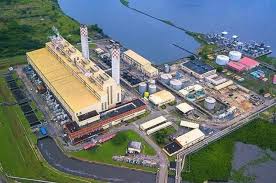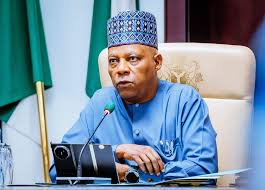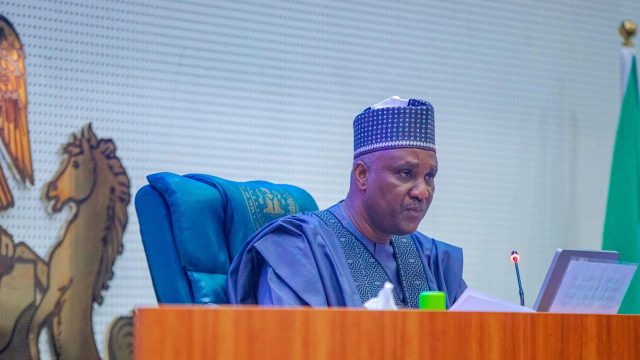…As crude prices plunge to four-year lows amid U.S.-China tariff war
By Charles Ebi
Federal Government has maintained its commitment to the Crude and Refined Product Sales in Naira initiative, describing it as important to alleviating the country’s foreign exchange ,forex, pressures and ensuring long-term energy security.
This reaffirmation came during a high-level update meeting of the Technical Sub-Committee on the Crude and Refined Product Sales in Naira held on Tuesday.
The session was convened to assess progress and address ongoing implementation challenges associated with the strategic policy.
The meeting was chaired by Mr. Wale Edun, the Minister of Finance and Coordinating Minister of the Economy, who also serves a Chairman of the overarching Implementation Committee. He was joined by Mr. Zacch Adedeji, the Executive Chairman of the Federal Inland Revenue Service ,FIRS, and Chairman of the Technical Sub-Committee.
Also in attendance were senior officials from across the oil and gas value chain, including the Chief Financial Officer of NNPC Limited, Mr. Dapo Segun, representatives from NNPC Refineries and NNPC Trading, Dangote Petroleum Refinery and Petrochemicals, as well as key regulatory stakeholders such as the Nigerian Upstream Petroleum Regulatory Commission ,NUPRC, Nigerian Midstream and Downstream Petroleum Regulatory Authority ,NMDPRA, the Central Bank of Nigeria ,CBN, Nigerian Ports Authority ,NPA, and a representative of Afreximbank. The meeting was coordinated by the Committee’s Secretary, Hauwa Ibrahim.
The initiative, according to a statement posted on X (formerly Twitter) by the Federal Ministry of Finance yesterday, is not a temporary or stop-gap measure but a long-term policy direction approved by the Federal Executive Council ,FEC.
The government sees the initiative as a critical pillar in its economic transformation agenda, particularly in light of its commitment to reducing Nigeria’s exposure to global oil price volatility and stabilizing the naira.
While acknowledging that no major policy reform is without its teething problems, the Committee emphasized that challenges currently facing the program are being systematically addressed through inter-agency collaboration and stakeholder engagement.
Issues raised at the meeting included logistics and infrastructure bottlenecks, coordination between upstream producers and downstream offtakers, pricing templates, and compliance by key market operators. These, the Committee said, are already being handled through “coordinated efforts among all parties”.
The government emphasised that the initiative will remain in force as long as it aligns with national interest and economic objectives, further noting that the program will evolve in response to market realities and regulatory feedback.
In March 2025, Nairametrics reported that the Naira-for-crude initiative of the federal government had ended.
A statement issued following this development by the NNPCL’s Chief Corporate Communications Officer, Olufemi Soneye, confirmed that the pilot phase of the arrangement was made for six months.
meanwhile, Global oil prices fell sharply on Wednesday, hitting their lowest levels since February 2021, as escalating trade tensions between the United States and China, the world’s two largest economies, dampened demand expectations.
Rising supply levels added further pressure on the market, triggering fresh concerns about a potential global oil glut.
According to Reuters, as of 4:23 a.m. GMT, Brent crude futures declined by $2.38 ,3.79%, to $60.44 per barrel, while U.S. West Texas Intermediate ,WTI, crude futures dropped $2.46 ,4.13%, to $57.12.
Both benchmarks have now fallen for five consecutive trading sessions.
The Brent six-month spread also narrowed sharply to just $0.79, its lowest since mid-November 2024, a steep fall from the $5.69 peak recorded in January, signaling that the market is increasingly pricing in a surplus.
The bearish momentum followed the implementation of President Donald Trump’s 104% tariffs on Chinese imports, which took effect from 12:01 a.m. ET yesterday.
The tariffs, which add an extra 50% penalty after China failed to roll back its own retaliatory measures, have escalated fears of a prolonged trade war that could stunt global economic growth and reduce fuel demand.
In response, China denounced the move as economic “blackmail” and promised further retaliatory measures, complicating any hopes for a swift resolution.
Analysts now warn that Chinese oil demand growth previously expected to contribute an additional 50,000 to 100,000 barrels per day ,bpd, could be significantly curtailed if hostilities persist.
“China’s aggressive retaliation diminishes the chances of a quick deal between the world’s two biggest economies, triggering mounting fears of economic recession across the globe”, said Ye Lin, Vice President of Oil Commodity Markets at Rystad Energy.
Adding to the market’s woes, OPEC+, which includes the Organization of the Petroleum Exporting Countries and allies like Russia, agreed last week to increase production by 411,000 bpd in May, a move widely seen as contributing to potential oversupply.
In its latest outlook, Goldman Sachs projects that Brent could dip to $62 by the end of 2025 and $55 by the end of 2026, with WTI following a similar trajectory.
The recent plunge in oil prices presents a major risk for Nigeria’s oil-dependent economy. With crude oil contributing about 80% of government revenues and 95% of foreign exchange earnings, prolonged price weakness could exacerbate fiscal pressures and threaten macroeconomic stability.
At current prices, Nigeria’s 2025 budget benchmark oil price of $75 per barrel is significantly above Brent’s current level of around $60.
A sustained shortfall could lead to wider budget deficits, increased borrowing, and further strain on the foreign exchange market.
Moreover, the narrow Brent spread and surplus outlook may discourage fresh investment in Nigeria’s upstream sector, particularly in deepwater projects with higher breakeven costs.
However, a silver lining may be found in U.S. crude inventory data released by the American Petroleum Institute, which showed an unexpected drawdown of 1.1 million barrels indicating some level of ongoing demand resilience.











